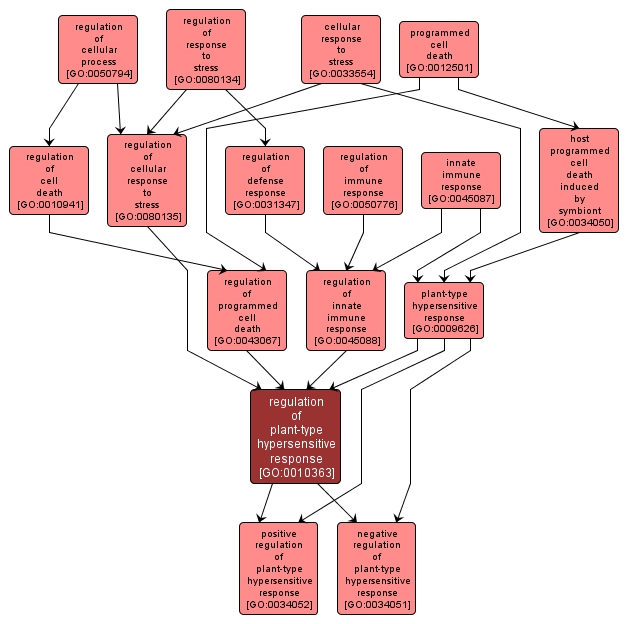GO TERM SUMMARY
|
| Name: |
regulation of plant-type hypersensitive response |
| Acc: |
GO:0010363 |
| Aspect: |
Biological Process |
| Desc: |
Any endogenous process that modulates the frequency, rate or extent of the plant hypersensitive response. |
Synonyms:
- regulation of HR
- regulation of HR-PCD
- regulation of plant hypersensitive response
|
|

|
INTERACTIVE GO GRAPH
|














